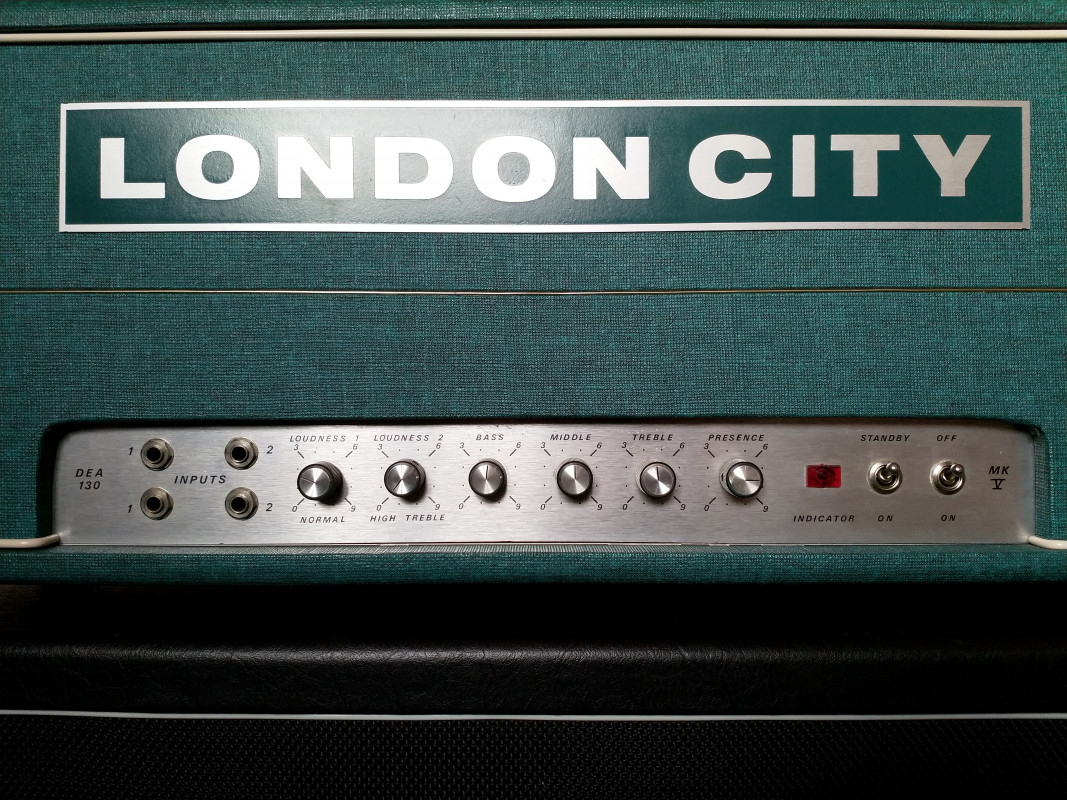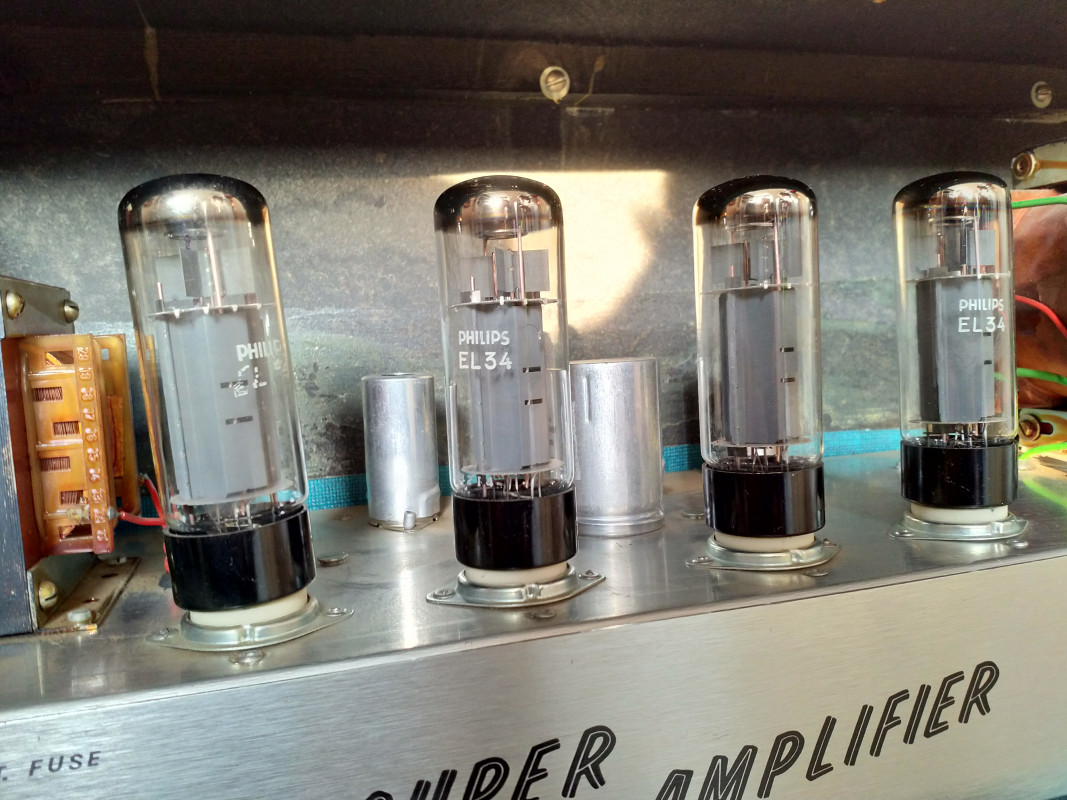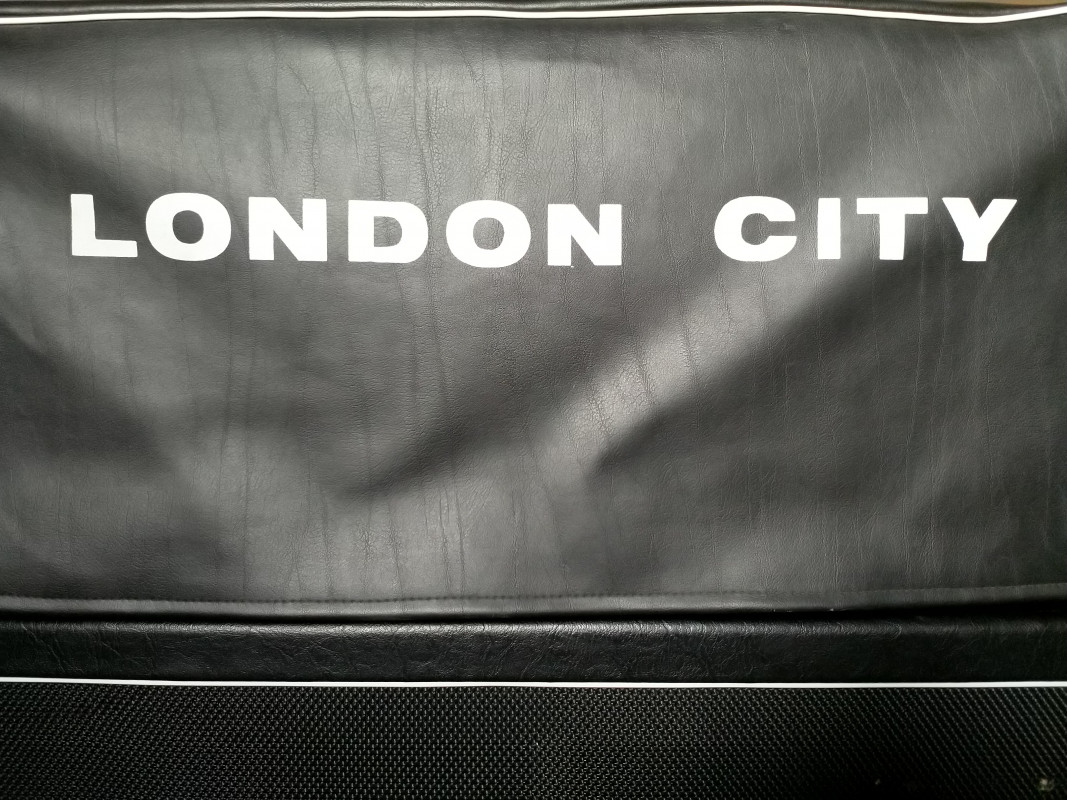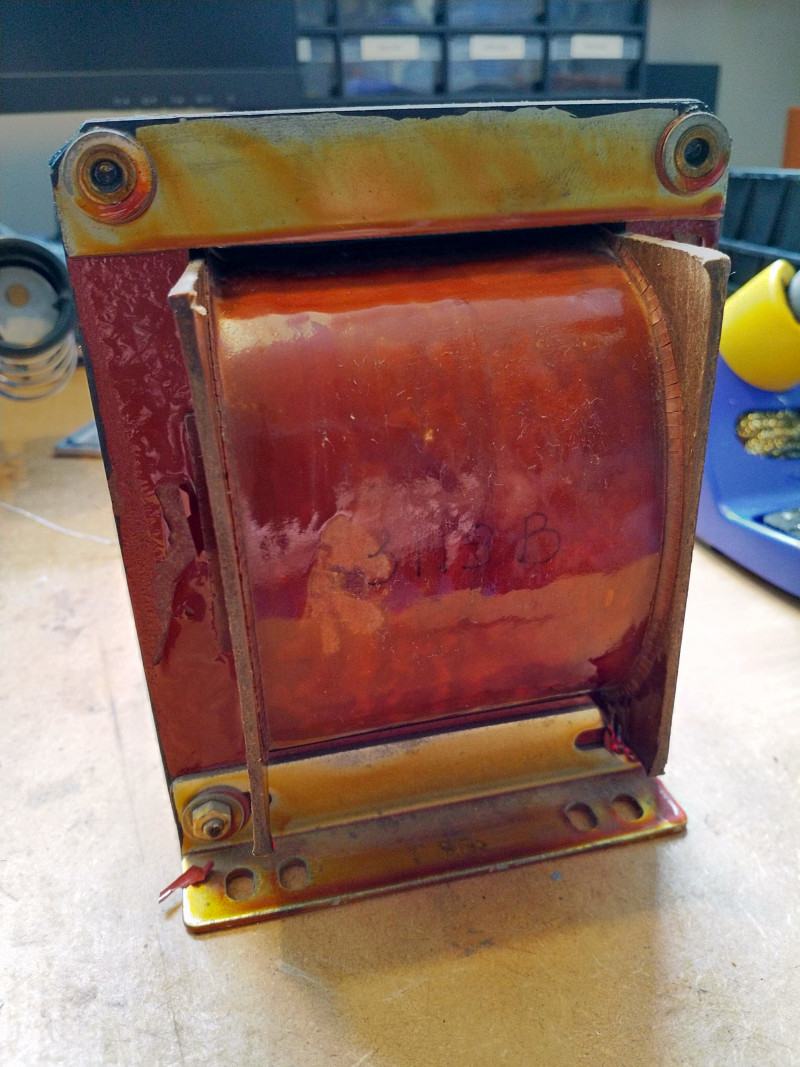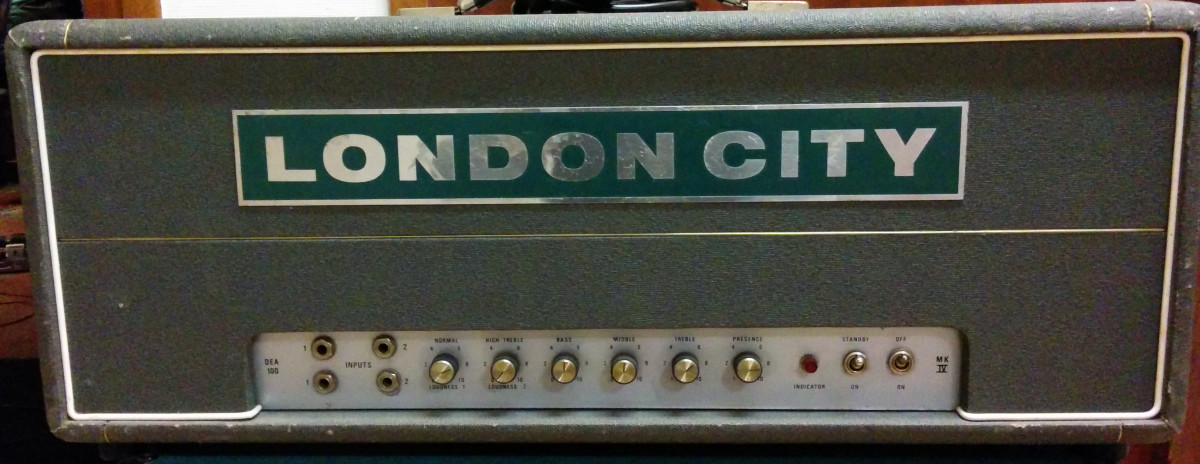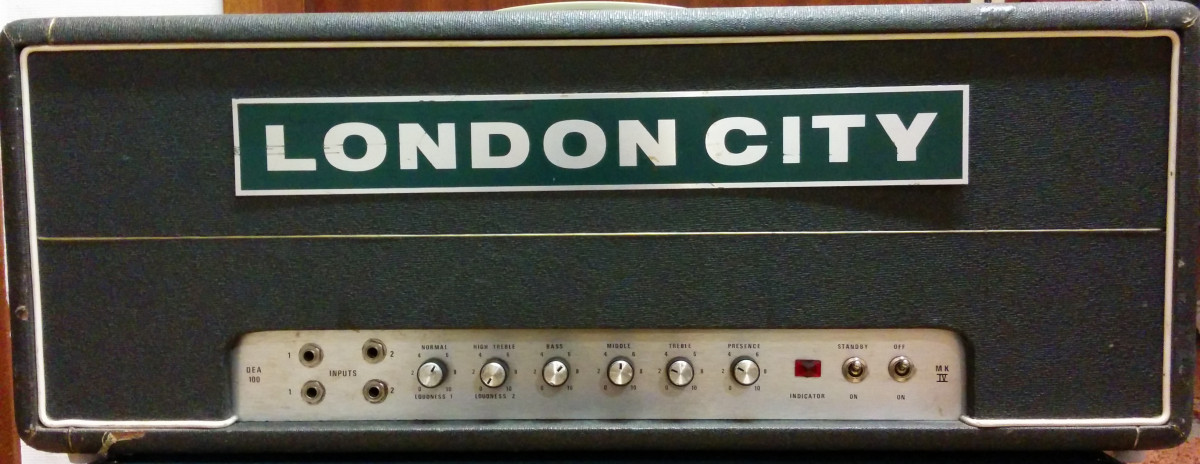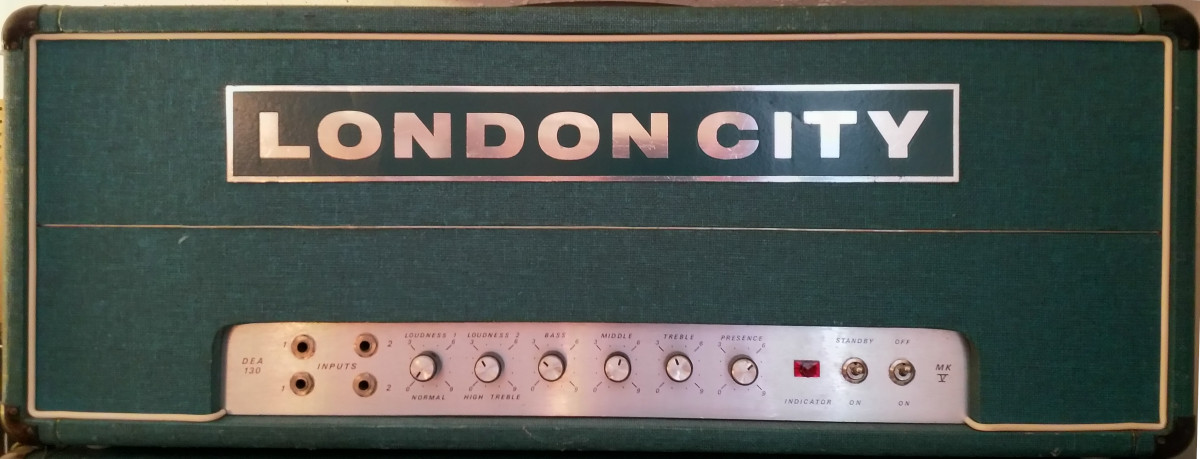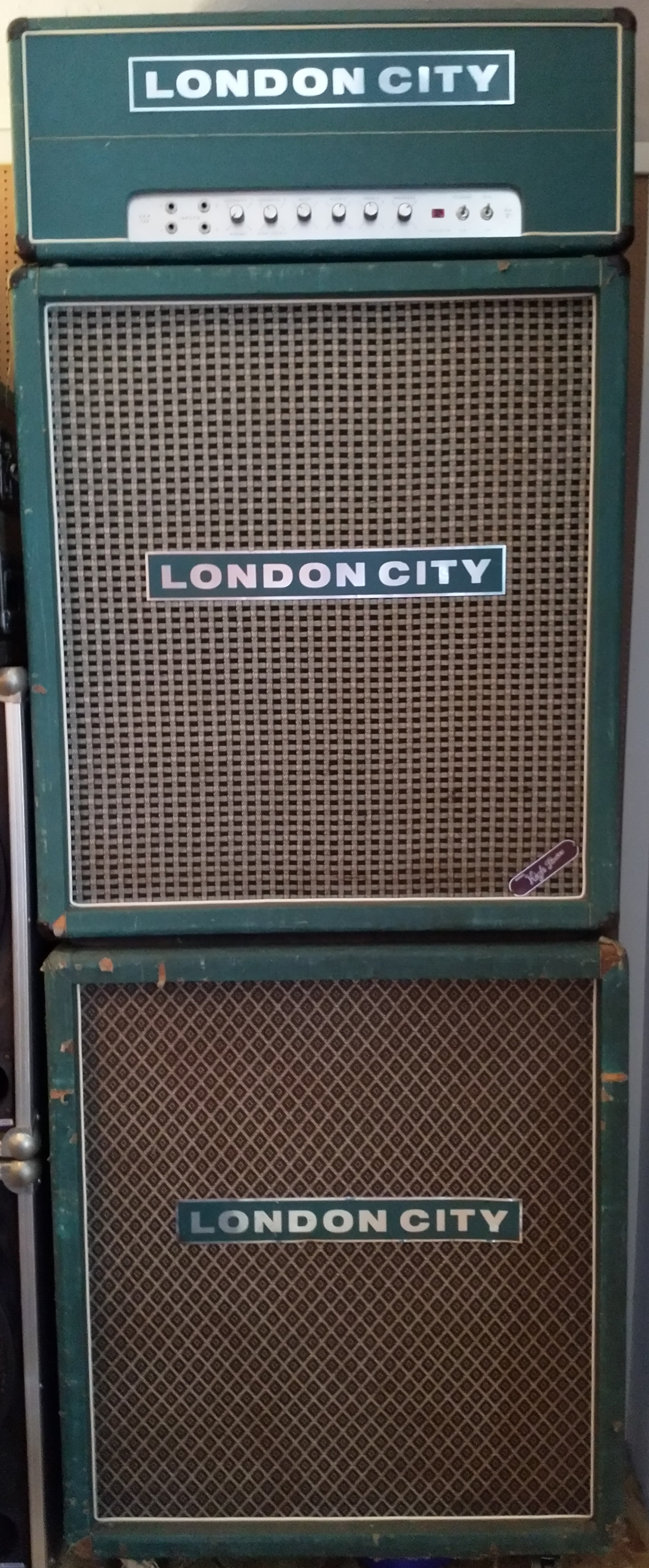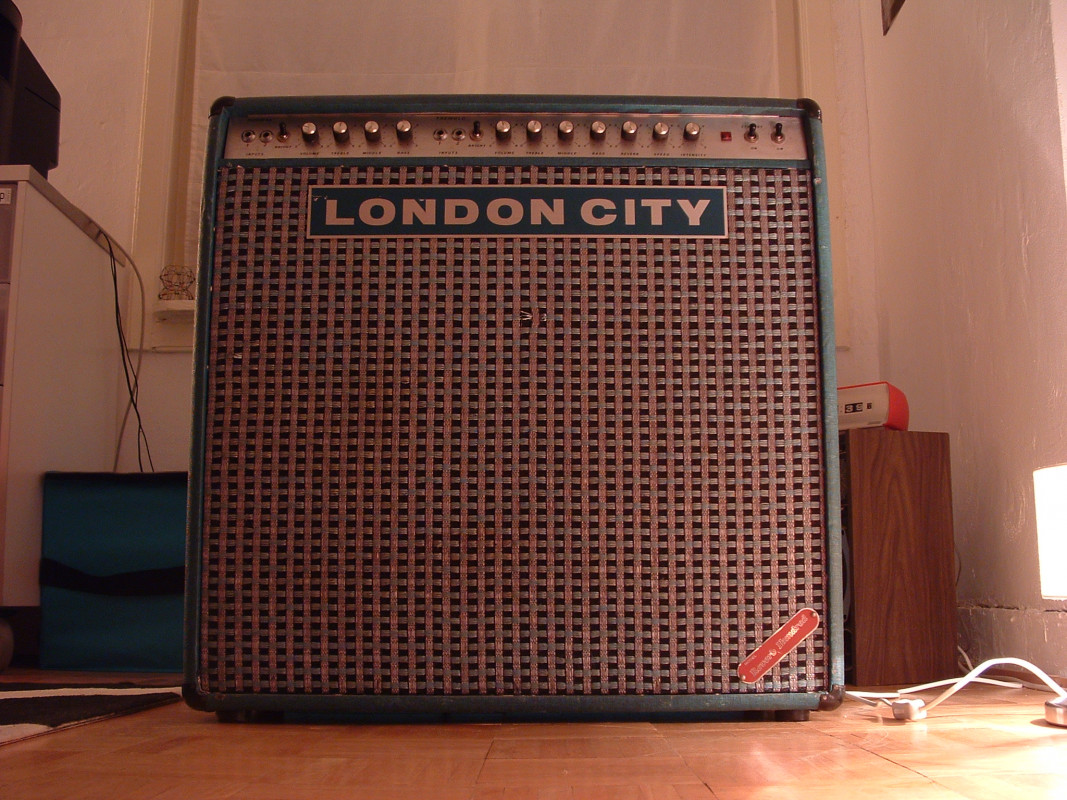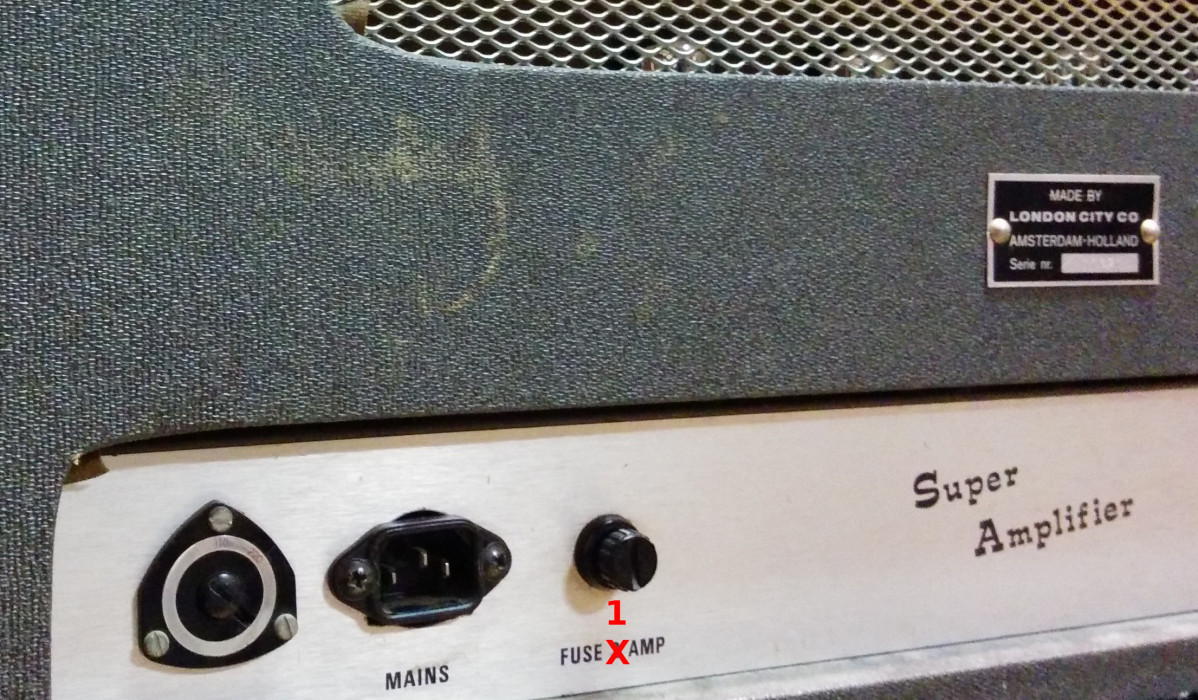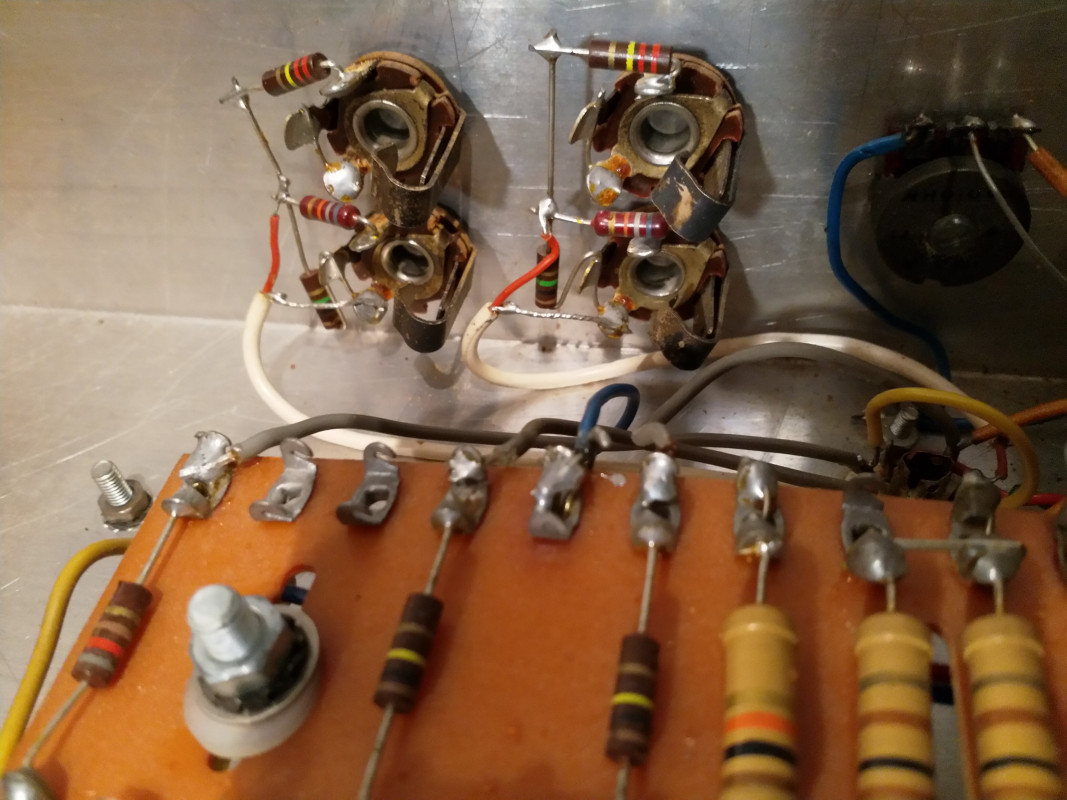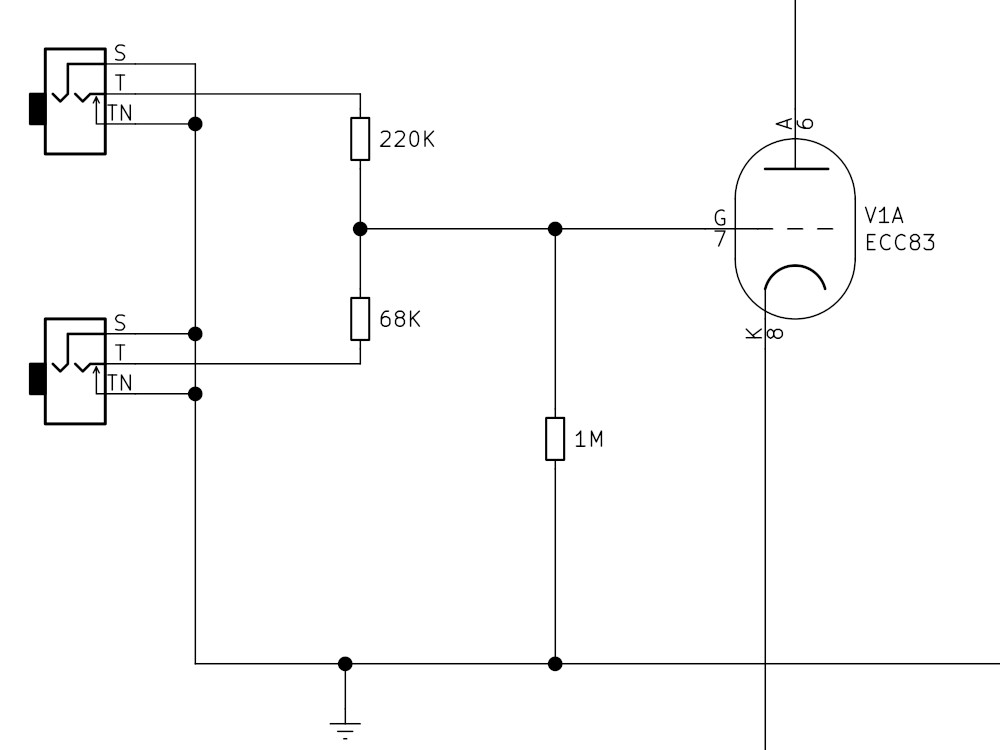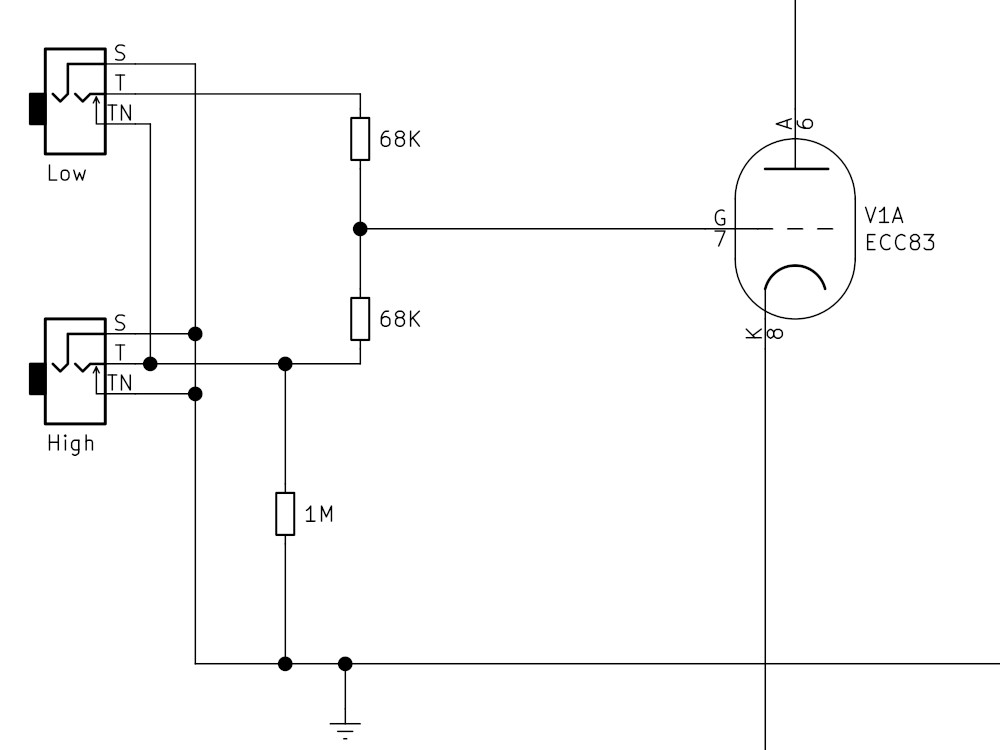London City
The Dutch amps from the 1970's. Marshalls were quite expensive around that time so a Dutch company started offering an alternative. The DEA series are basically Marshall Plexi's with a power stage apparently straight from the Philips EL-34 manual. With some minor modifications you can get them much closer to the original. Bear in mind though that Plexi's work with higher voltages than the DEA's (±560V for an EL34 equipped Plexi vs ±435V for a DEA) but considering someone like Van Halen used a variac to lower those voltages you might get a bit of a better idea in which sonic territory a properly set up DEA can be placed.
I love London City's. Bought my first half stack in the beginning of the 00's at De Plug, a turquoise DEA130 MKIV with a cabinet loaded with G12H30 55Hz's. Still got it, I'll never part from it. Through the years I acquired two grey DEA100's, a plexi panel and an aluminium panel, and two Reverb 100's, a turquoise combo. I also bought what I call “The Museum Piece”, an almost stock turquoise DEA130 with the original tubes, so three Philips ECC83's and four Philips EL34's. According to Xavier of Dr. Tube this was the best sounding London City he had ever had at his work shop at that time. It's sitting in a flight case on the attic. It also has the original London City amp cover.
Sold the Reverb 100's and the aluminium panel DEA100. I've used the plexi panel DEA100 with Stage Banter. I also abuse it to improve my amp tech skills. This amp has learned me how to bias and I've succesfully improved its sound and useability by modding the inputs to high and low inputs and by adding a tonestack switch. I'm also replacing as many electrolytics as possible with their film equivalents and getting it closer to Marshall specs.
Fire hazard
Yes, London City's are renown for catching fire. Almost every London City owner I know, including myself, has a great story about an LC catching fire or blowing out grey-blue smoke. The plexi panel I still own was a real pyrotechnic show when it blew up, I saw the sparks going from one side to another behind the front panel. Brought it to Dr. Tube but had to take it back after two weeks because it burned out again. The damage this caused is still visible when you open up the amp, there's a burning hole in the turret board and burning marks scattered throughout the inside of the aluminium chassis. I can assure you that this definitely improved the mojo and maybe also the sound of this amp.
Transformers
First thing to check when buying an old London City, does it have the good quality Prova transformers or the later Italian ones or have they been replaced alltogether? Prova transformers were quality transformers made in The Netherlands as far as I know (though Dr Tube claims they were made in Belgium) which are, in my opinion, the heart and soul of a London City.
Power transformer
Prova 3119A.
Output transformer
Prova 3119B. Specimen below is from my turquoise DEA130, it had to be replaced, probably because I used it with a 16 cabinet of which I thought it was 8 ohm so I connected it to the 8 ohm output for years. This caused a high impedance mismatch which can kill your output transformer. Replacement was done by Ernst Fliek.
Tubes
Preamp and Phase Inverter
Early London City's were fitted with Telefunken ECC83's. Later on Philips ECC83's were used.
Power Tubes
Philips EL34's.
Models
DEA50 and DEA100
The Mark IV's. DEA100 is the 100W version with four EL34's, the DEA50 is its little brother with 50W and two EL34's. The very first London City's were black with golden piping, followed by the grey versions. The first grey versions had plexi panels, plexi logo's and round pilot lights, after that first the logo's and then the panels transitioned to brushed aluminium and the pilot lights were replaced with either square or rectangular ones. There are very early models with rectangular pilot lights too though.
If you run into a black DEA50 or DEA100 with white piping it has most definitely been refinished in some way with either black tolex or even worse, black paint.
DEA70 and DEA130
Then came the turquoise Mark V versions and the designations changed from DEA50/DEA100 to DEA70/DEA130. This was also the period when the Prova transformers were phased out in favor of Italian made transformers. At the end of the 1970's the tolex color changed from turquoise to black, also the logo changed with a different font and coloring.
And a full stack, both cabinets are loaded with G12H30 55Hz's. Notice the difference in grill cloth between the two cabinets. The lower cabinet has the grill cloth that also came with the grey cabinets that match with the grey DEA100's and DEA50's.
I'm still looking for a grey cab for my plexi DEA100. The grey cabs I've encountered so far were mostly loaded with Greenbacks.
DEA250
A 200W amp with 8 power tubes, reminiscent of the Marshall Major.
Reverb 100
I owned two Reverb 100's too. Nico Verduin from Verelec revised the first one and I bought a second one of which the housing was in a better condition. Switched the revised internals to the better housing and sold the unrevised one with the crumpled housing for a few bucks to a friend. I could never get friends with the Reverb 100 though and it was just so heavy so in the end I sold the good version too.
Schematics
Schematics and more info can be found on the currently defunct London City Schematics page of the Dr. Tube website.
Modifications
HT Fuse
The black little tube like thing you can unscrew at the back. It probably says “FUSE 2 AMP”. That's too much, once that fuse blows your LC probably already caught fire. Replace it with a fast blow 1A fuse or even 0.8A. Don't replace it with higher values, if your fuse keeps blowing there is definitely something wrong with your amp.
Input resistors
First thing you'd want to check are the input resistors of the four inputs. It could very well be that the input resistors are wired in such a way that they hardly or just don't differentiate between low or high inputs. By modding the input resistors to Marshall specs you increase the versatility of the amp and make it play nicely with both single coils and humbuckers. The low inputs work great for hot pickups like humbuckers and the high inputs work well with single coils.
Stock
Fender/Marshall style
To get Marshall style inputs the 220K resistors have to be replaced with 68K ones and the 1M resistors have to be moved.
Tonestack switch
Possibility to switch between the standard London City tonestack (56K, 250pF, aka Classic Marshall) and the “modern” Marshall tonestack (33K, 500pF) as used by Jimi Hendrix presumably.
